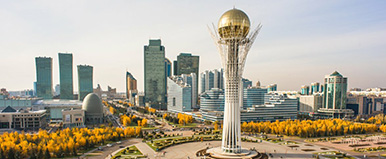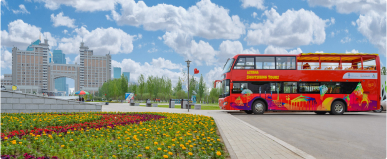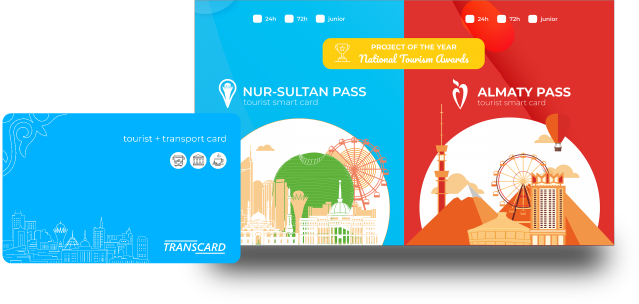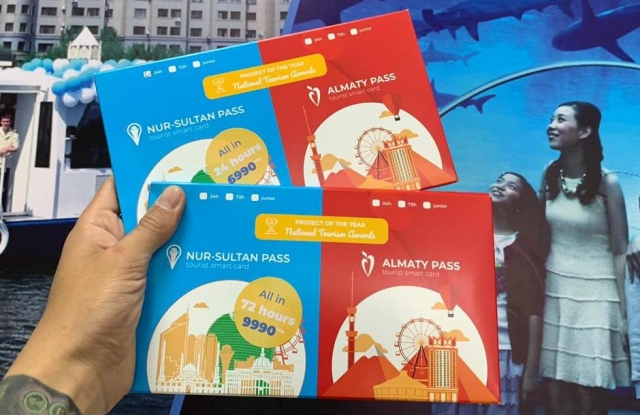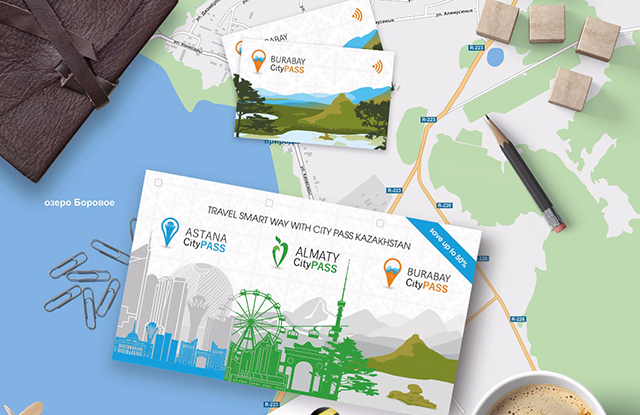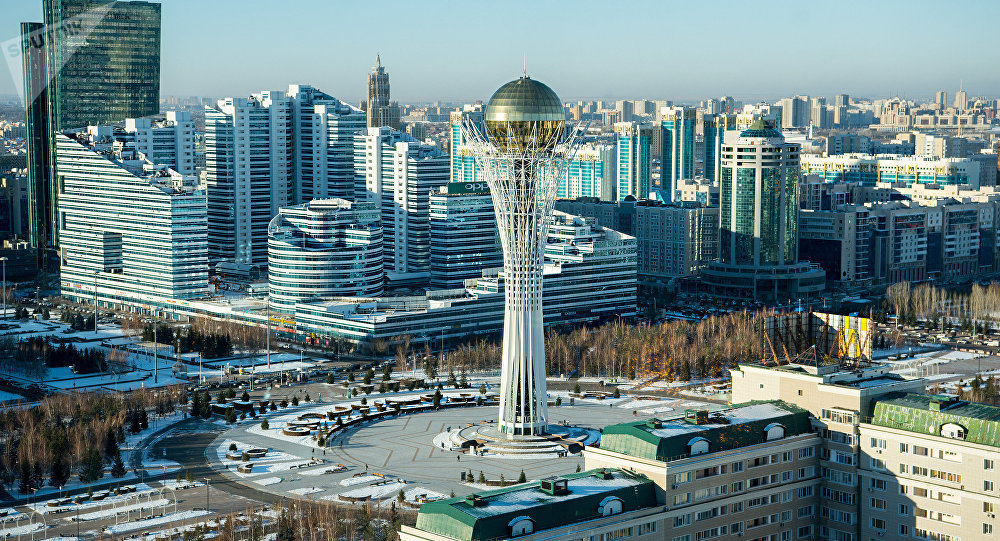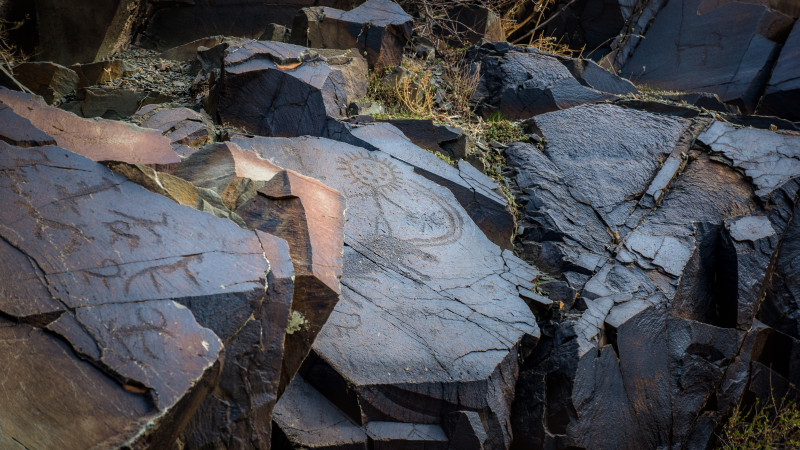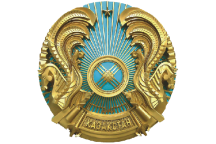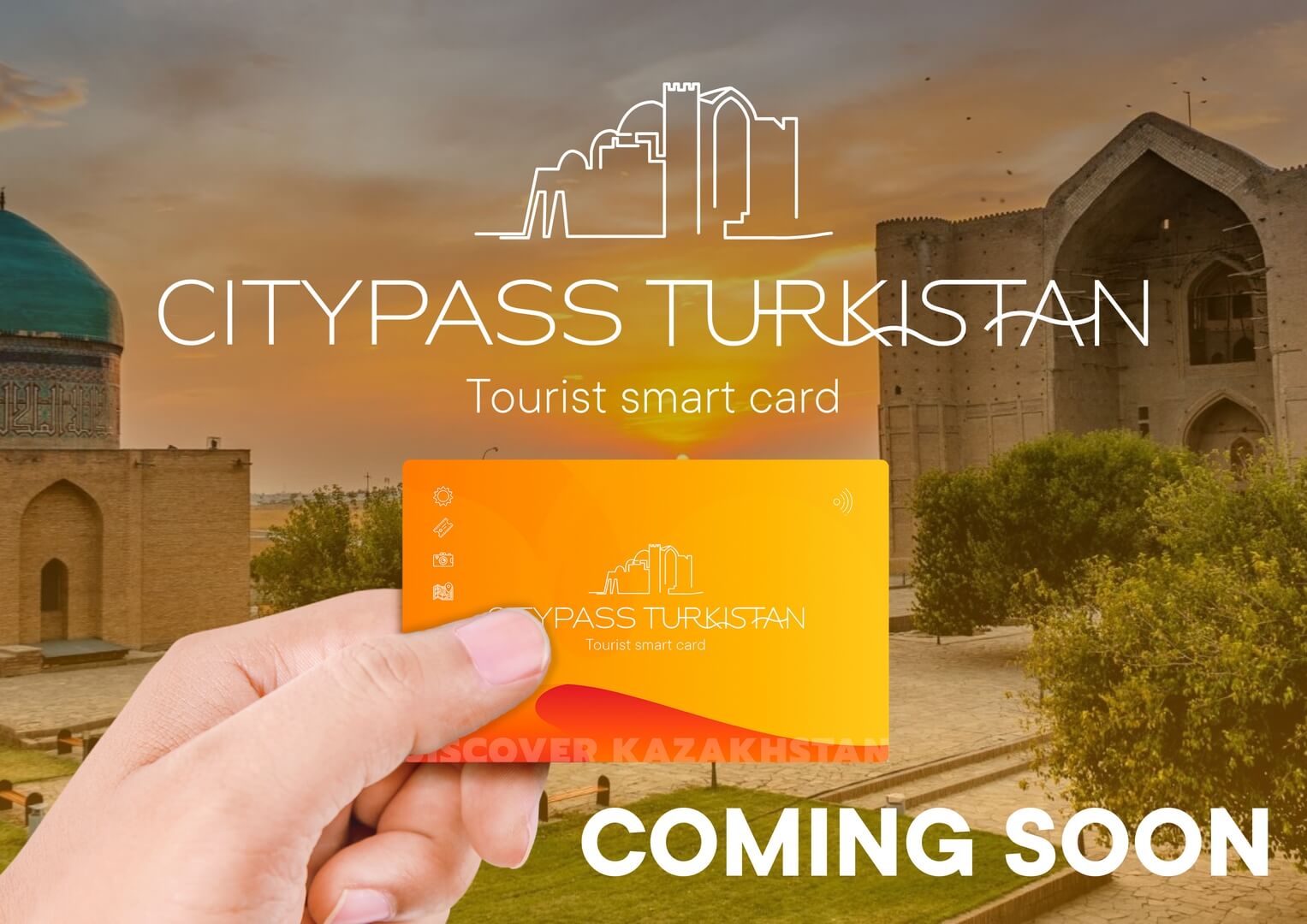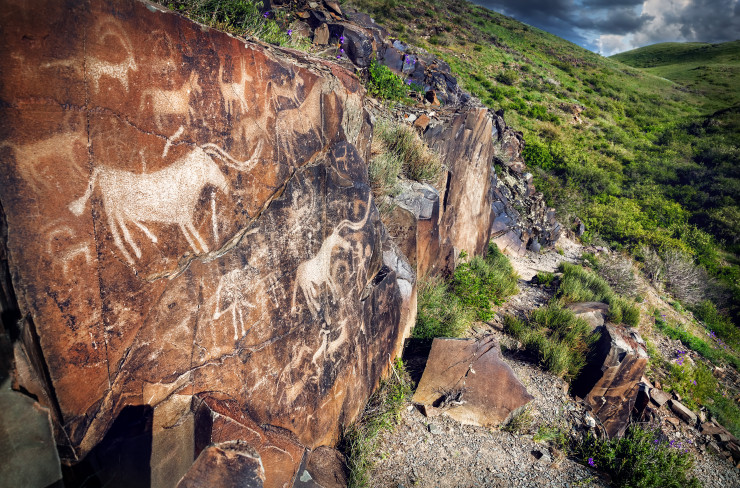
Фото @Shutterstock
A rare masterpiece of primitive rock art is a vertical panel with images of solar characters, ten dancing male warriors with weapons, a woman in labor and «adorants» (people who perform a rite of worship of the deity).
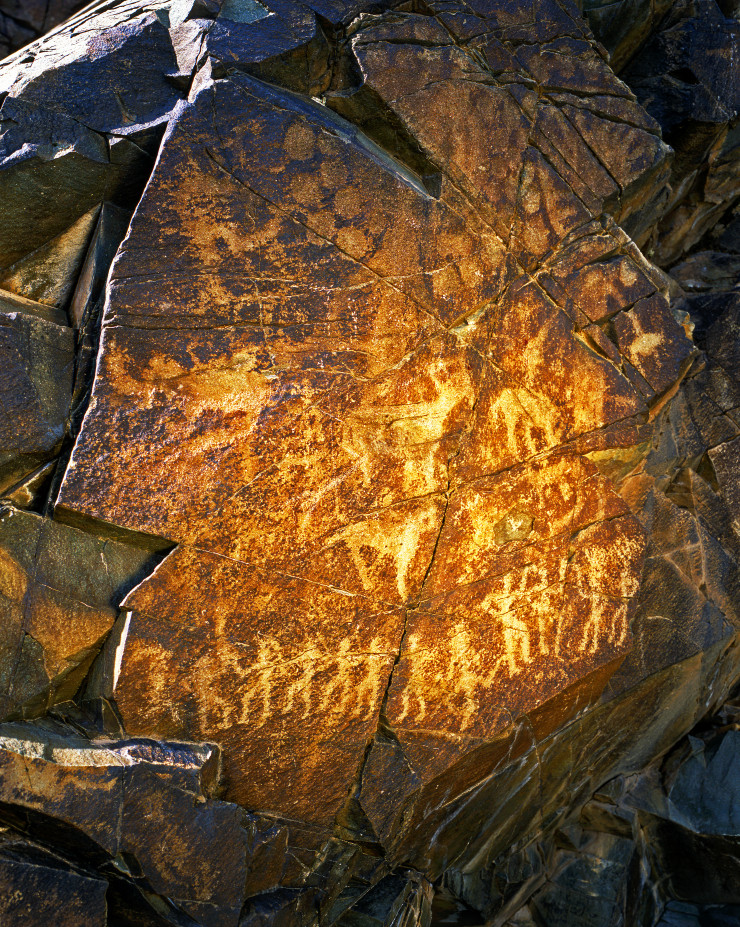
Изображение религиозного обряда. Фото @Shutterstock
Petroglyphs are concentrated in the canyon of the Tamgaly tract, on the walls of which more than 3000 drawings have been preserved. There are images of monsters dressed in animal skins with curved hooked arms, courageous warriors with clubs and battle axes, as well as deities with radiant halos around their heads, the so-called «sunheads». The image of an animal (possibly a mammoth) with a rider looks unusual. At the same time, some archaeologists believe that this is a clear evidence of the interchange of cultures of the great silk road era.
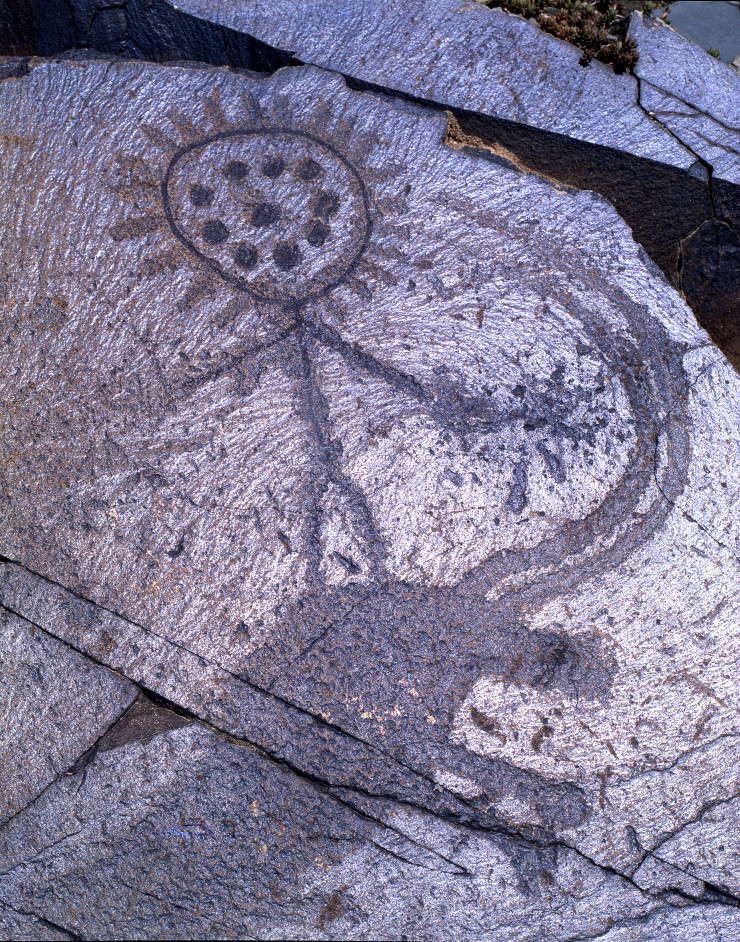
Человек-солнце верхом на животном. Две тысячи лет до нашей эры. Фото @Shutterstock
The sun-man riding an animal. Two thousand years before our era. Photo @Shutterstock
«Petroglyphs found on the territory of Kazakhstan are United by a common theme-the natural animal world. They depict living creatures. We have very few drawings of mountains, rivers, or even vegetation. Even if you imagine that the «sun-Man» is an interpretation of a plant, it is still represented as a living person, » Mikhail Dikan believes.
There are also drawings of married couples, women in labor, multi-figure compositions with images of people and animals, scenes of hunting animals, bull sacrifices and ritual rites — hierogamy.
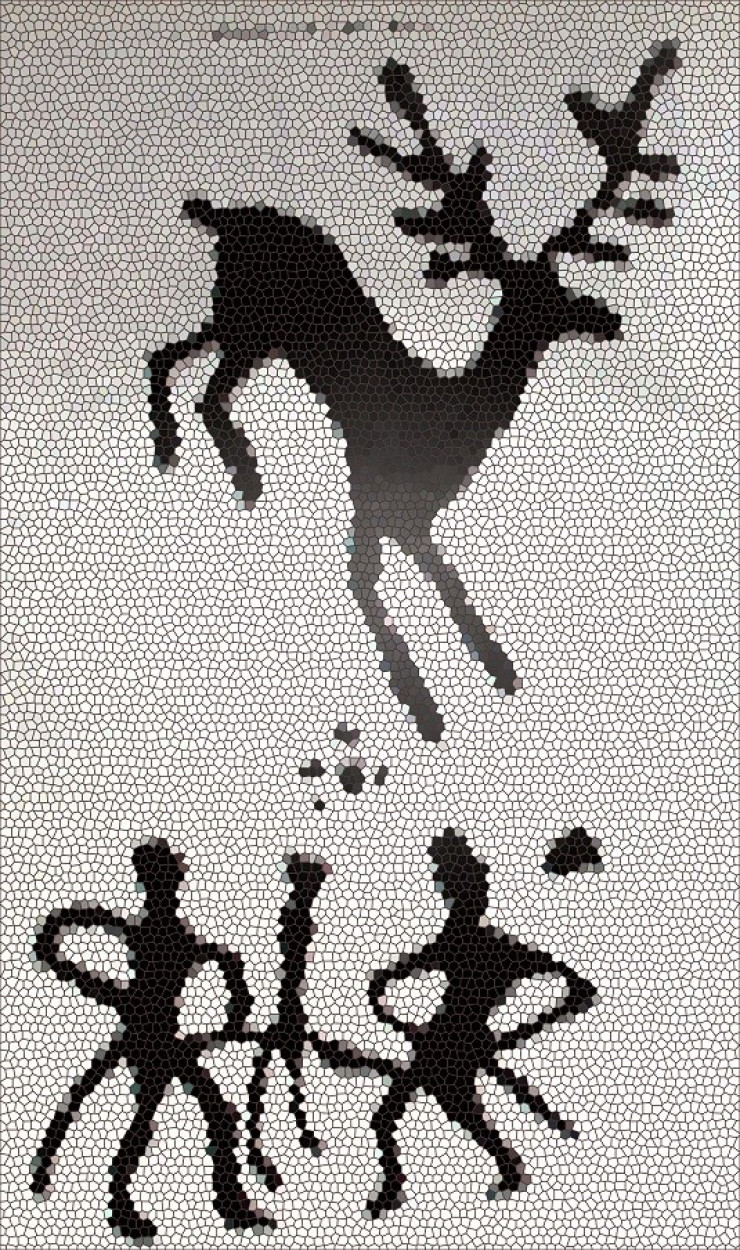
Иерогамия. Иллюстрация caa-network.org
Interesting fact.Hierogamy (from the Greek «sacred marriage») — this term is used by researchers of mythology and religion to denote marital relations and a ritual that symbolized the marriage between the gods.
There are also unique drawings of Buddhist origin. According to legend, in the tenth century, the Buddhists, following in the Semirechye, made a halt on the Bank of the Ili river. But then the forces of nature intervened — the earth shuddered and a huge block of stone fell to the ground with a crash. Wise Buddhists took this as a sign and left images of the Buddha on the broken part of the rock, and decided to return to their native India. They say that you only have to lean against a rock-carved Buddha to get a boost of energy.
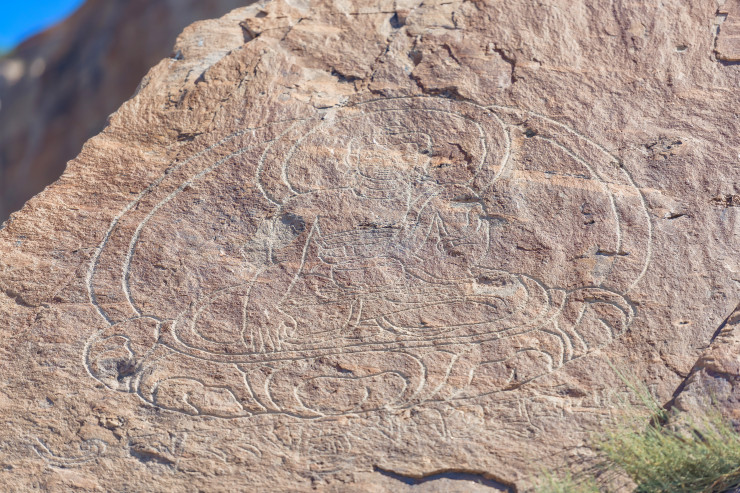
Фото @Shutterstock
The Tamgaly tract is located near the village of Karabastau. By car, you can get from Almaty to the place in about four hours. Tourist excursions take place on the territory of the Tamgaly complex, which is open to the public.
«It is necessary to see and feel the energy of this place! You can also relax there on the banks of the Ili river, we had a picnic, » one of the travelers who visited Tamgaly shared her impressions.

You can «visit» Tamgaly and not going anywhere. On the official website, you can take a 3D walk and see the petroglyphs from different angles.
Khantau rock art complex
Petroglyphs in the gorges of the Khantau mountain range were created from the first Millennium BC. Many of the images of early nomads are unique to this day. In 1965, a real discovery among specialists in Scythian archaeology was an engraving of the Amazon. It confirmed the guesses about the ancient traditions of women warriors — a scene of corral hunting for deer, the main participant of which is a naked woman who is on one knee and holding a stretched bow in her hands. The arrow is aimed at the deer, driven by mounted riders into the corral. The bow in the hands of the Amazon is clearly modeled.
Images of Khantau are distinguished by the technique of applying petroglyphs on rocks-a combination of point-punching the body of animals with drawing individual details (horns, hooves).
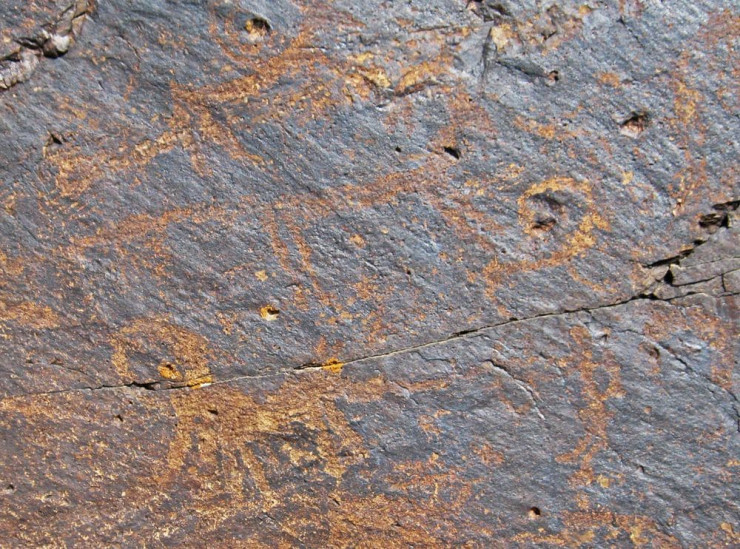
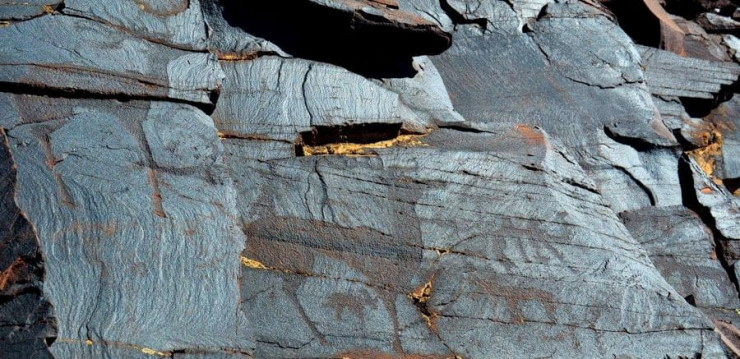
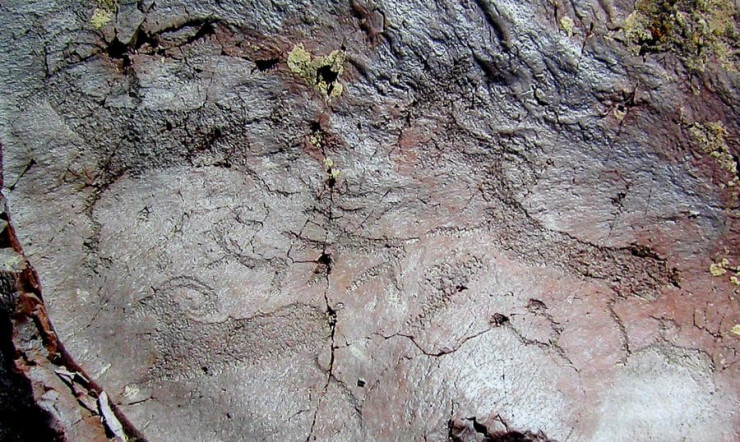
Фото Paleokazakhstan.info
The Khantau mountains are located on the territory of the southwestern Balkhash region, within the borders of the Chu-ili low mountains. You can get from Almaty to Khantau in eight hours by car or in seven hours by train to the railway station of Khantau.Арпаузен
There is a village of Sholakkorgan in the Turkestan region. Here, at an altitude of 950 meters above sea level, near the Karatau mountains, 25 kilometers South-West of Sholakkorgan, is The arpauzen tract — this is another place where rock paintings were found. These are some of the most diverse subjects drawings of the I and II millennia BC.
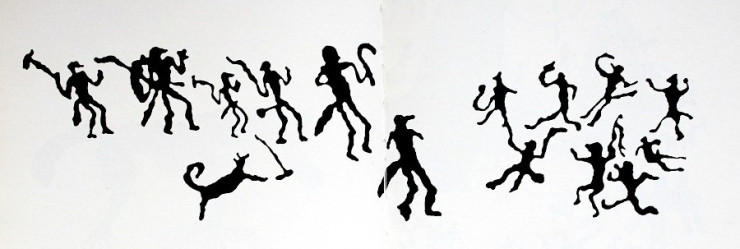
Картина мира в урочище Арпаузен. Фото caa-network
The arpauzen petroglyphs are not located on individual stones, but on flat slabs. Rock carvings have been carved here for many centuries. Rock slabs, characterized by a powerful patinization and smooth surface, were a kind of canvas of the inhabitants of this area until the end of the XIX century.
In total, more than three thousand images — scenes of hunting goats with dogs, economic life, religious rites, images of a camel and other animals. Some images are still being speculated on. Who is it? A bird, a kangaroo, a dinosaur?
 «Открытая родина», Петроглифы Арпаузена. Кадр из видео Youtube/TVK TV
«Открытая родина», Петроглифы Арпаузена. Кадр из видео Youtube/TVK TV
There are also solar signs.
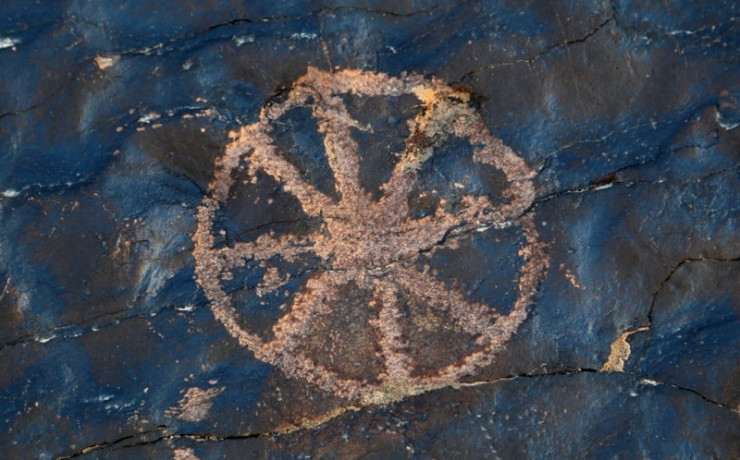
A large number of horses and kulans are depicted on the slabs of this tract. Horses were depicted on a leash, with riders, and harnessed to chariots. A total of 16 chariots and freight carts were carved.
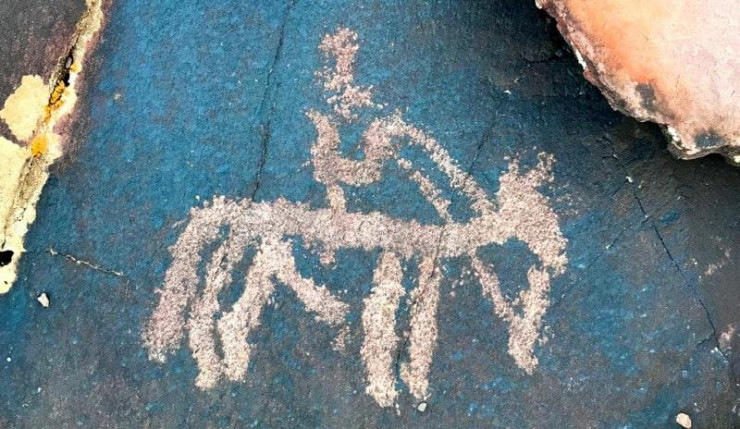
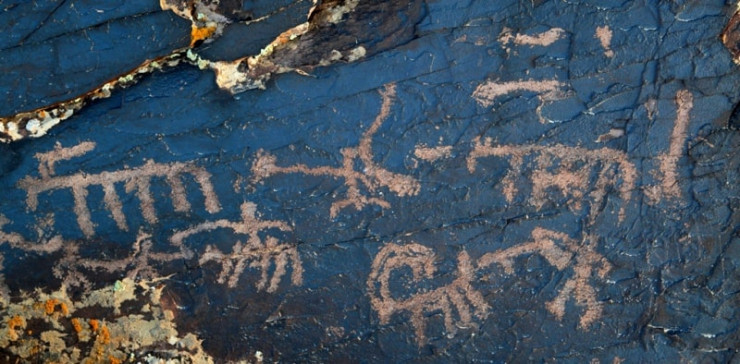
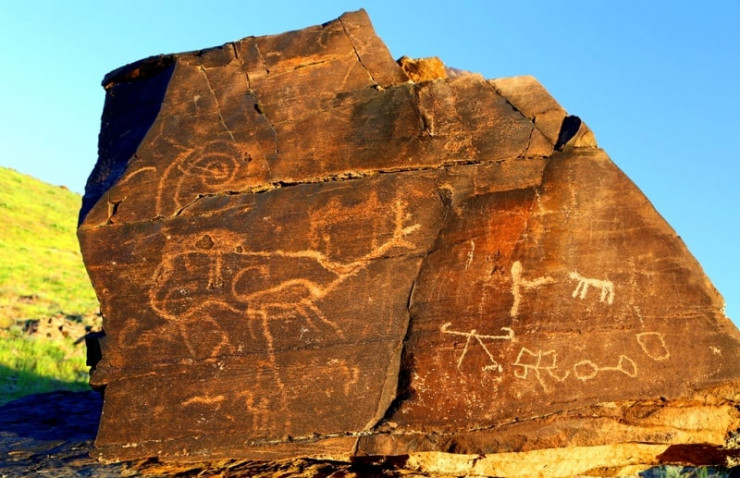
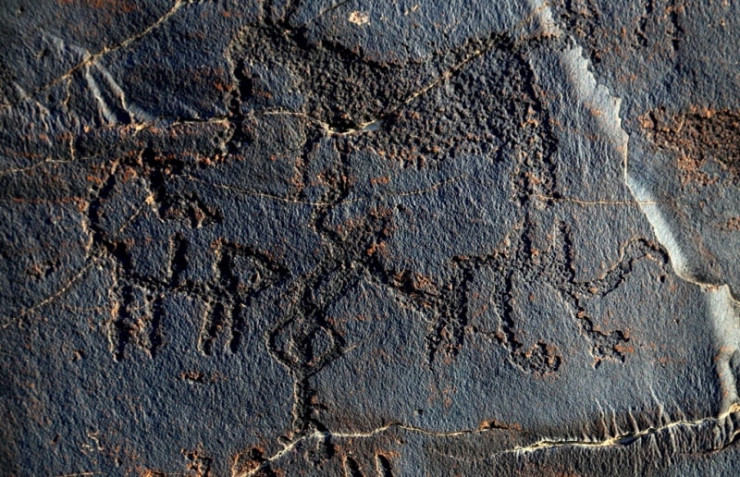
Фото Silkadv/Александр Петров
From Shymkent, you can get to Arpauzen by car in a couple of hours. The tract is located three kilometers North of the Karatau mountains.

Boraldai petroglyphs
Boralday rural district of Baidibek district is located 60 kilometers North of Shymkent. It was formed in 1929, spread over an area of more than 86 thousand hectares. Baidibek district is a reference hinterland of southern Kazakhstan. The area is almost the size of Belgium, and the population is about 70 thousand.
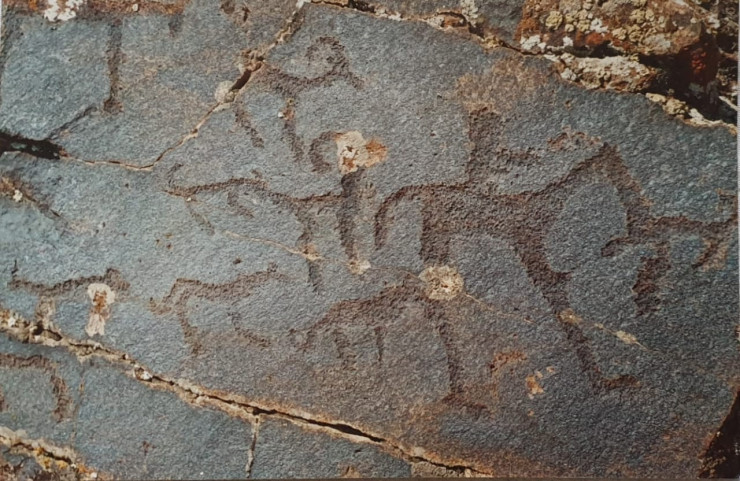
По словам археолога Диканя, этого рисунка всадника уже нет, возможно, постарались мародеры. Фото Михаила Диканя
Petroglyphs found here at the beginning of the XX century are divided into two groups — one is located directly on the Bank of the Boraldai river, the other — higher up the slope. The earliest drawings belong to the bronze age. Only the engravings of the Boraldai there are four chronological layers:
1. The bronze age (II Millennium BC). The final stage is highlighted.
2. the Early iron age ( I Millennium BC) with the allocation of the Scythian-Saka «animal style» with its ornamentation and decorativeness.
3. the Turkic layer is weak and inexpressive — only tamgo-like goats and tamgs (VI-IX centuries).
4. Kazakh and Sufi cycles (XV-XIX centuries). «Sufi» stories should be attributed to the era of the Kazakh khanates and even to a later time in connection with the penetration of Islam into the Kazakh steppes. Kazakh folk drawings are realistic. Local historian Alexey Goncharov described the rock images he saw:
«Mountain sheep-argali, the main object of ancient hunting. Further-more, we come across images of horses and hunting scenes where people use bows.»

«Here on Boraldai, the drawings are divided into two groups: the oldest belong to the bronze age, they are five thousand years old or more, and the younger ones — to the early iron age. They are three or four thousand years old. A large number of petroglyphs in one place indicates the presence here in ancient times of a cult center, a sanctuary of the bronze age.»
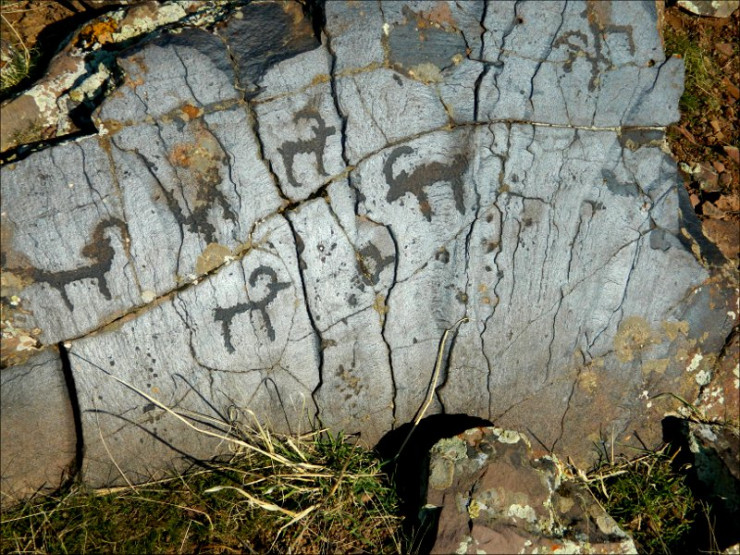
Фото Алексея Гончарова
«Among the numerous images of ungulates and hunters with bows, there are images of predators, for example, a leopard or a leopard, which could then be found in Karatau. An important role in hunting was played by dogs, images of which are also found. There are also symbols that do not lend themselves to unambiguous interpretation, such as a sign next to a magnificent mountain goat. According to scientists, this sign belongs to the bronze age, and the image of the goat was applied in the early iron age. The scenes of ritual duels of men belong to the bronze age,» local historian Alexey Goncharov wrote about this place.
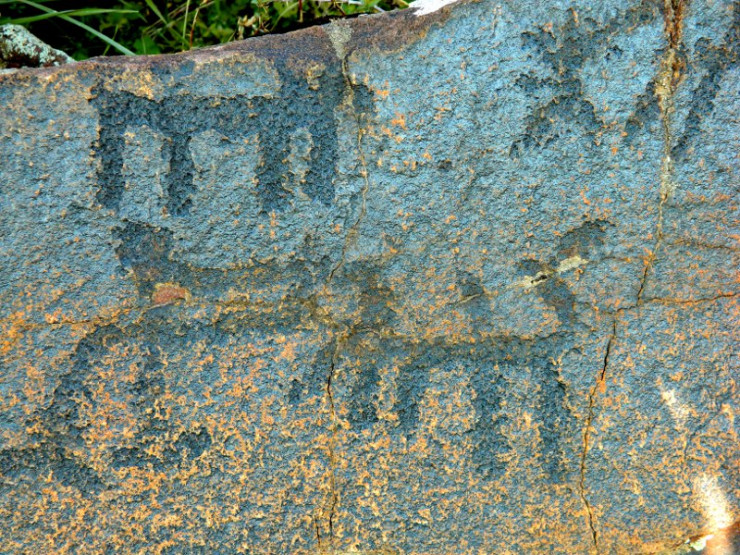
Фото Алексея Гончарова
«Unfortunately for us, because of the easy accessibility of ancient rock paintings disappear, and in their place there are new-inscriptions and names created by the hand of modern people. The petroglyphs of Boraldai undoubtedly constitute the great heritage of Kazakhstan and need our protection, » complains the traveler Yulia, who captured the acts of vandalism.

You can get from Shymkent to Boraldai in an hour. From there, in a North-easterly direction, directly a little less than ten kilometers to the petroglyphs.

Petroglyphs Of Eshkiolmes
One of the largest clusters of rock paintings on the territory of Kazakhstan-the eshkiolmes tract — was discovered in the 1980s by the Abai KazPI expedition. Now this unique place is a candidate for inclusion in the UNESCO world heritage list of sites with «outstanding universal value» for the whole world.
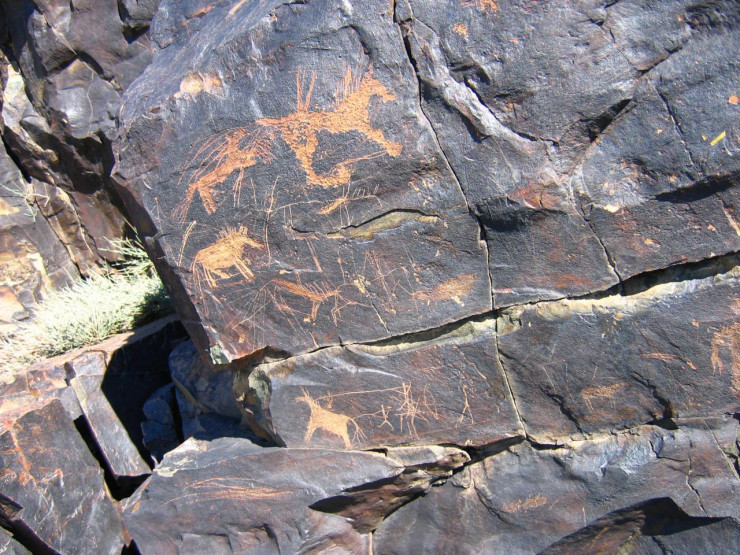
Фото Silkadv
Eshkiolmes — so Kazakhs-cattlemen usually referred to as the area rich in year-round pastures. The fertile valley of the Koksu river, where the tract is located, has been a favorable area for human habitation since ancient times. Here, in the upper reaches of these gorges, nomads organized their camps, sheltering from the cold winter winds. Here archaeologists have found dozens of sites of ancient, medieval nomads and nomads of the later period of the XVII-XX centuries.
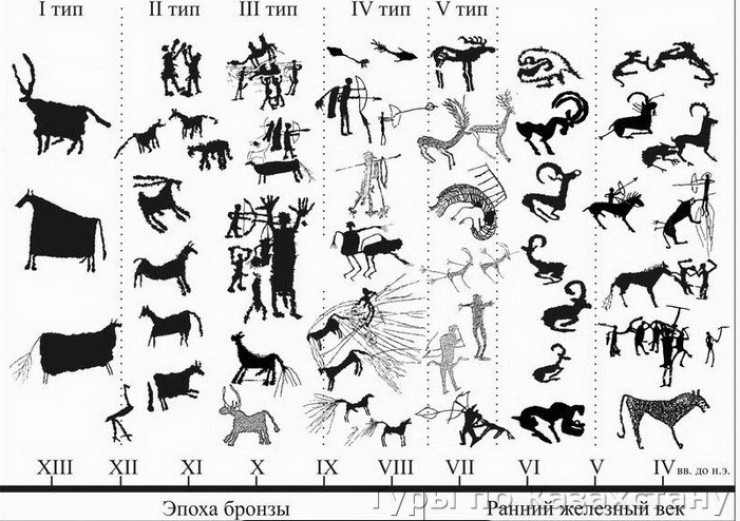
Таблица петроглифов Ешкиольмеса, разработанная Алексеем Рогожинским. Иллюстрация caa-network.org
Ancient rock carvings in the Eshkiolmes range were found on the southern slopes of the mountains and on the rocks covered with patina. The exact number of petroglyphs has not been established, but according to researchers, the total number of images here is close to 10,000 drawings, which makes it possible to consider Eshkiolmes the largest monument of rock art in Kazakhstan. And every year, archaeologists reveal new, previously unknown petroglyphs. Most often they are represented by animal figures, less often by hunting scenes.
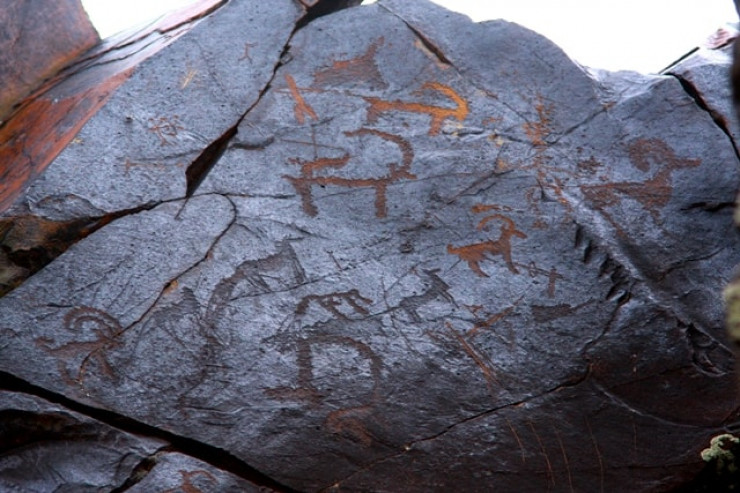
Фото Silkadv
Very interesting is the scene of the sacrifice of a goat, located in the upper part of the hill. The inverted figure of the animal may mean that it has been killed. The image of a couple with their hands raised next to each other may indicate the cult character of the composition. Or animal figures in a rectangular style and images of people with pigtails in a circle. Interesting are large drawings of goats and deer with an elongated body and a rider armed with a bow.
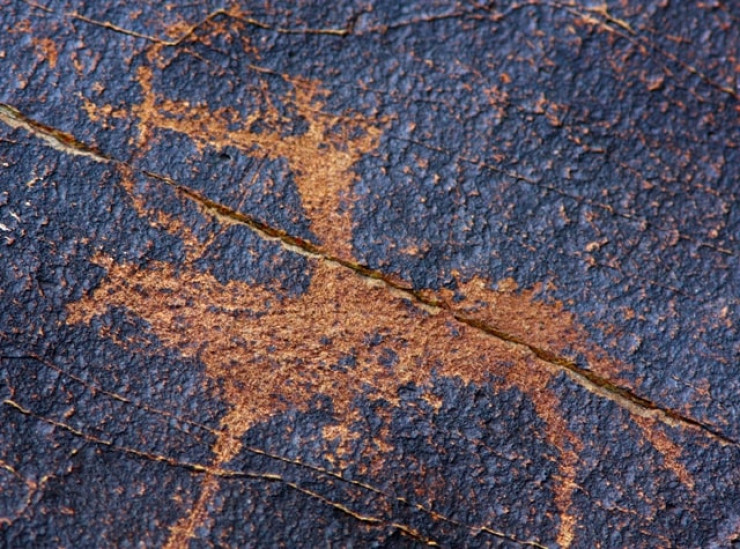
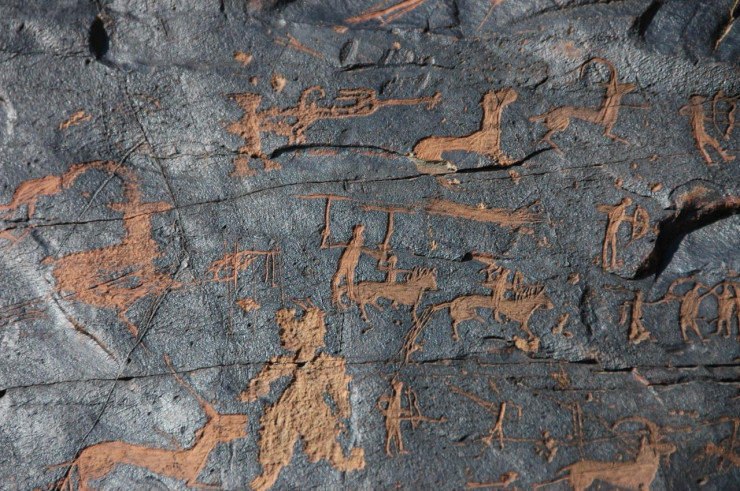
Фото Silkadv
Petroglyphs were created by embossing, carving and engraving on stone. This combined drawing technique is associated with the specifics of local rocks — fine-grained Sandstone with a mirror-smooth surface covered with a blue-black patina. Curiously, the tract is widely known in the scientific world both abroad and in Kazakhstan. But it is almost unknown to the inhabitants, even among the local population.
«I don’t know if this is some kind of megaproject or an art gallery of our ancestors left to us, or maybe it’s an ancient text Message, but this number of petroglyphs in the Yeshkiolmes mountains is considered one of the largest in Kazakhstan. Just imagine: the length of about 20 kilometers. It takes at least a few months to get around everything,» one of the travelers shared his emotions.
The road by car from Taldykorgan to the village of Eshkiolmes takes half an hour, from there to the petroglyphs-plus or minus 20 minutes in the direction of the southwest to the tract.

Of course, these are not all places in Kazakhstan where you can literally touch the history. Karasai gorge in Zhambyl region with drawings of tigers on high rocks, the AK bauyr grotto in East Kazakhstan, where the images are made in ochre, the petroglyphs of Karakyr, Bayan-Zhureka, Serektas, Usek, Tyrnakty, Arharly, Olentin pisanitsy near Ekibastuz — all these places have not yet been fully explored and still preserve the history of our ancestors.
You can share your stories about getting acquainted with this art form in the comments and tell us where you managed to touch the history of our ancestors.
We hope that the coronavirus pandemic will soon end and the borders for travel will be reopened.
Aviata.kz is a service that allows you to quickly find, book and purchase railway and air tickets online in any direction from anywhere in the world, without leaving your home or office.
Информация взята с сайта tengritravel.kz

